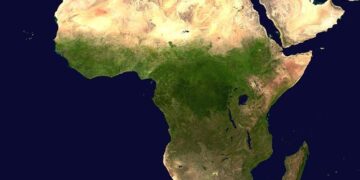Does Planet Nine exist?
This mystery has puzzled scientists for decades, but the answer—and the suspected world—remains elusive. Astronomers leading the search for the potential planet orbiting our sun far beyond Neptune recently revealed that they’ve whittled away at where it might be in the sky, eliminating 78 percent of its possible hiding places. While that lengthens the odds that the planet exists, there’s a still a lot of sky left to search, including spots that are much tougher to sift through.
From observing other stars, we know the possibility of such an as-yet-undiscovered world isn’t too far-fetched (figuratively speaking). In 2000, astronomers published a paper showing that an exoplanet might exist around the star HD 163296 at a distance of nearly 50 billion kilometers, over 10 times Neptune’s distance from the sun (not-so-humblebrag: I was an author on that paper), much farther out than models at the time suggested. Indeed, several planets were later found orbiting that star at great distances. So a priori, it’s possible a planet might exist in the cold, dark depths of our own solar system. It could even be quite large, the size of an ice giant like Neptune.
On supporting science journalism
If you’re enjoying this article, consider supporting our award-winning journalism by subscribing. By purchasing a subscription you are helping to ensure the future of impactful stories about the discoveries and ideas shaping our world today.
The first credible observations supporting the existence of such a planet in our own neighborhood came in late 2003, when the trans-Neptunian object (or TNO) Sedna was discovered. At very roughly 1,000 kilometers across it’s classified as a dwarf planet, and its orbit is very unusual: it never gets closer than approximately 11 billion kilometers to the sun, well outside Neptune’s orbit, and reaches an astonishing 140 billion kilometers at its farthest; for perspective, that’s over 75 and 900 times the Earth-sun distance, respectively. Theoretical models show that it’s difficult to form a body with those characteristics in place. More likely, it formed closer in to the sun, and an unseen planetary mass farther out—Planet Nine?—pulled it into its current orbit. The discovery of a second similar odd object, 2012 VP113, prompted astronomers Chad Trujillo and Scott Sheppard to propose the possible existence of just such a planetary body in the outer solar system.
As more TNOs were found, especially very distant ones, an unusual and unexpected pattern emerged. They follow elliptical orbits that should be oriented in any direction, but instead seemed to have a peculiar alignment: all their long axes (what astronomers call their major axes) were roughly aligned. Not precisely parallel, but close enough that it raised suspicion something nonrandom was going on. In 2016 Caltech astronomers Konstantin Batygin and Mike Brown (full disclosure: Brown is a personal friend) published a paper showing that the orbits of these objects were not only aligned in orientation but also shared a similar degree of tilt with respect to Earth’s orbit. The chance of such an alignment in such a small sample, they concluded, was far less than 1 percent. They further argued a planetary object greater than 10 times Earth’s mass could be the culprit, its gravity pulling on these distant icy bodies over time, aligning them.
Somewhat tongue-in-cheek, they gave this hypothetical planet the moniker Planet Nine (or P9), a bit of fun-poking at astronomers still unhappy that the International Astronomical Union demoted Pluto’s planetary status in 2006. And since I brought it up, I’ll add that I don’t think “planet” is something we need to define; in fact, I don’t think it can be defined. It’s a concept, not a definition, like “red” or “continent.” The edges around such words are fuzzy, and we shouldn’t allow our thinking about them to be overly constrained by arbitrary definitions.
Anyway, over time, more indirect evidence for P9’s existence came to light, notably a slight tilt of the sun’s spin axis, none of which was conclusive, but all curious enough to keep astronomers searching for a culprit.
Still, all the indirect evidence in the world (or worlds) doesn’t add up to a single direct observation of the planet. So the game was afoot.
Many telescopes take sky surveys, wide-angle image campaigns that map large swaths of the heavens to look for what astronomer call “transients”: objects that change brightness or position over time. These include exploding stars, black holes fitfully gobbling down matter, asteroids and, potentially, Planet Nine.
Brown and Batygin have led the charge to sift through the search data. Along with their colleague Matthew Holman they published their latest results in the April 2024 issue of the Astronomical Journal.
Using the TNO alignments and working backwards, they calculated a most likely orbit for P9, calculating its approximate shape and orientation space. Unfortunately the actual position of the possible planet in its orbit is unconstrained. That means it could be anywhere along its path around the sun, which leaves a large fraction of the sky still potentially hiding Planet Nine.
Astronomers have combed through a variety of past sky surveys looking for this history-making discovery. First, Dark Energy Survey (DES) observations came up negative after searching about 10 percent of the space where Planet Nine might hide. Next, 56 percent of that possible space was ruled out looking at three years of data from the Zwicky Transient Facility (ZTF) as well. Finally they turned to the Pan-STARRS1 survey, which spent 2009 through 2015 covering the three quarters of the entire sky visible from a telescope atop Haleakalā on Maui. The astronomers combed through the data to look for a moving object that matched Planet Nine’s predicted behavior. This is no simple task; they initially found 1.3 billion objects, but using various techniques were able to winnow that down to a mere 244 million. This still took months of computer time to process.
Unfortunately no planet unveiled itself in the data. Taken together with the DES and ZTF surveys (and accounting for overlaps in coverage), the astronomers have now eliminated 78 percent of P9’s hiding places.
This does lengthen the odds that the purported planet exists. But while down, it’s not out. The 22 percent of the sky where it still could hide includes a big chunk that looks out into the plane of our Milky Way Galaxy, where stars are far more crowded together, making the search more difficult. If it’s there, it’s well hidden. The Vera Rubin Observatory, expected to go fully online in 2025, will be able to efficiently search these spots in the sky, though, so we may soon know what’s what with P9.
Do I personally think it exists? As a scientist I can’t say one way or another. But as a human being I’ll readily admit I want it to be out there. Another planet in the solar system! We’d learn so much about this distant region, and it would advance our understanding of how the solar system formed and evolved over the eons. Complicating matters, even if astronomers don’t find P9 that doesn’t mean it never existed; the strange alignments in the outer solar system may have been sculpted in the distant past, but then the gravity of a nearby passing star could have summarily ejected the planet from our solar system.
Or it could be out there, cold and dark, just waiting for us to detect its feeble glow from the terribly distant sun’s reflected light. Even if you count Pluto, it’s been nearly a century since a new solar system planet was discovered, closer to two centuries if you don’t count it. We should soon know one way or the other.
This is an opinion and analysis article, and the views expressed by the author are not necessarily those of Scientific American.
>>> Read full article>>>
Copyright for syndicated content belongs to the linked Source : Scientific American – https://www.scientificamerican.com/article/where-is-planet-nine-its-hiding-places-are-running-out/































